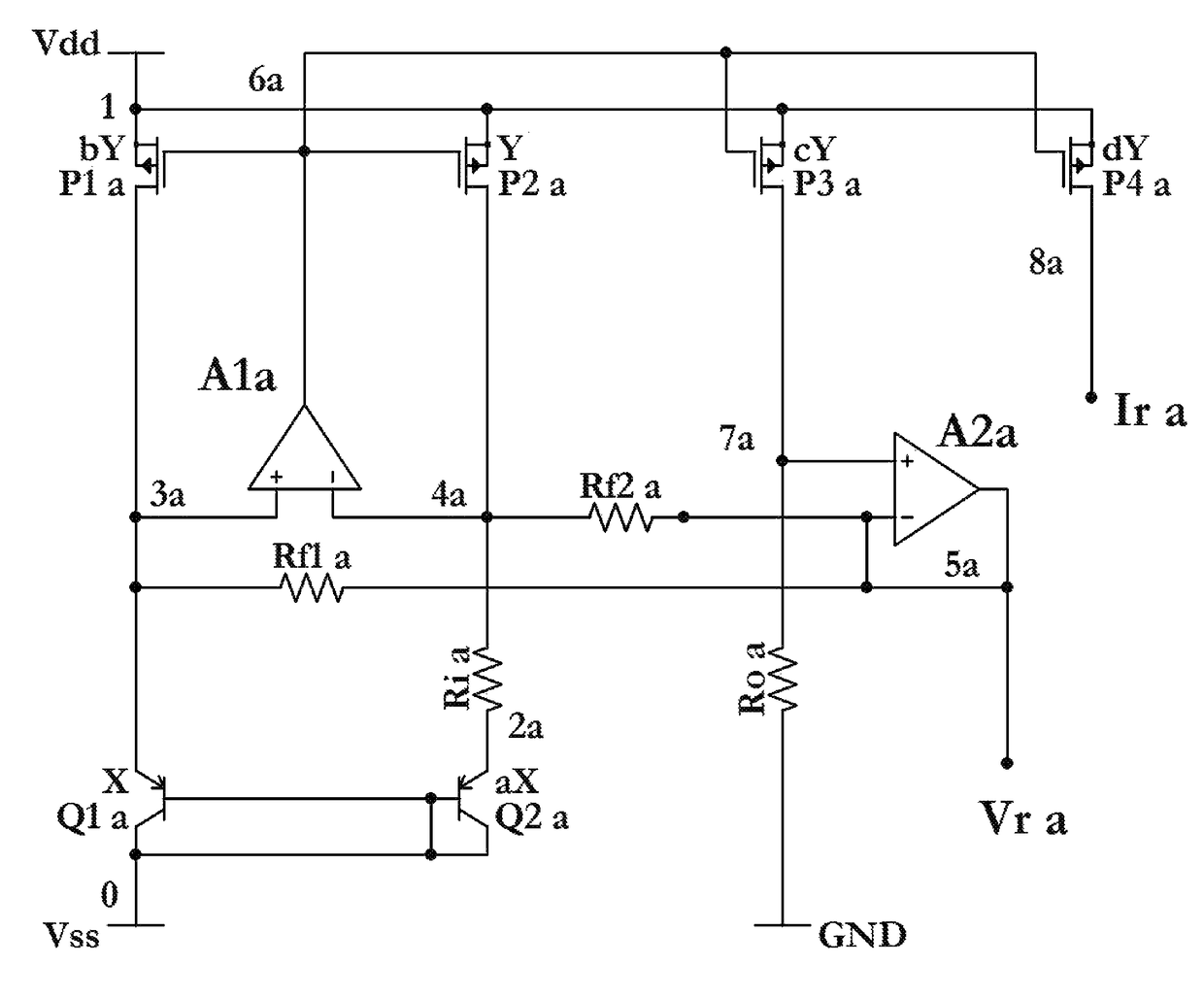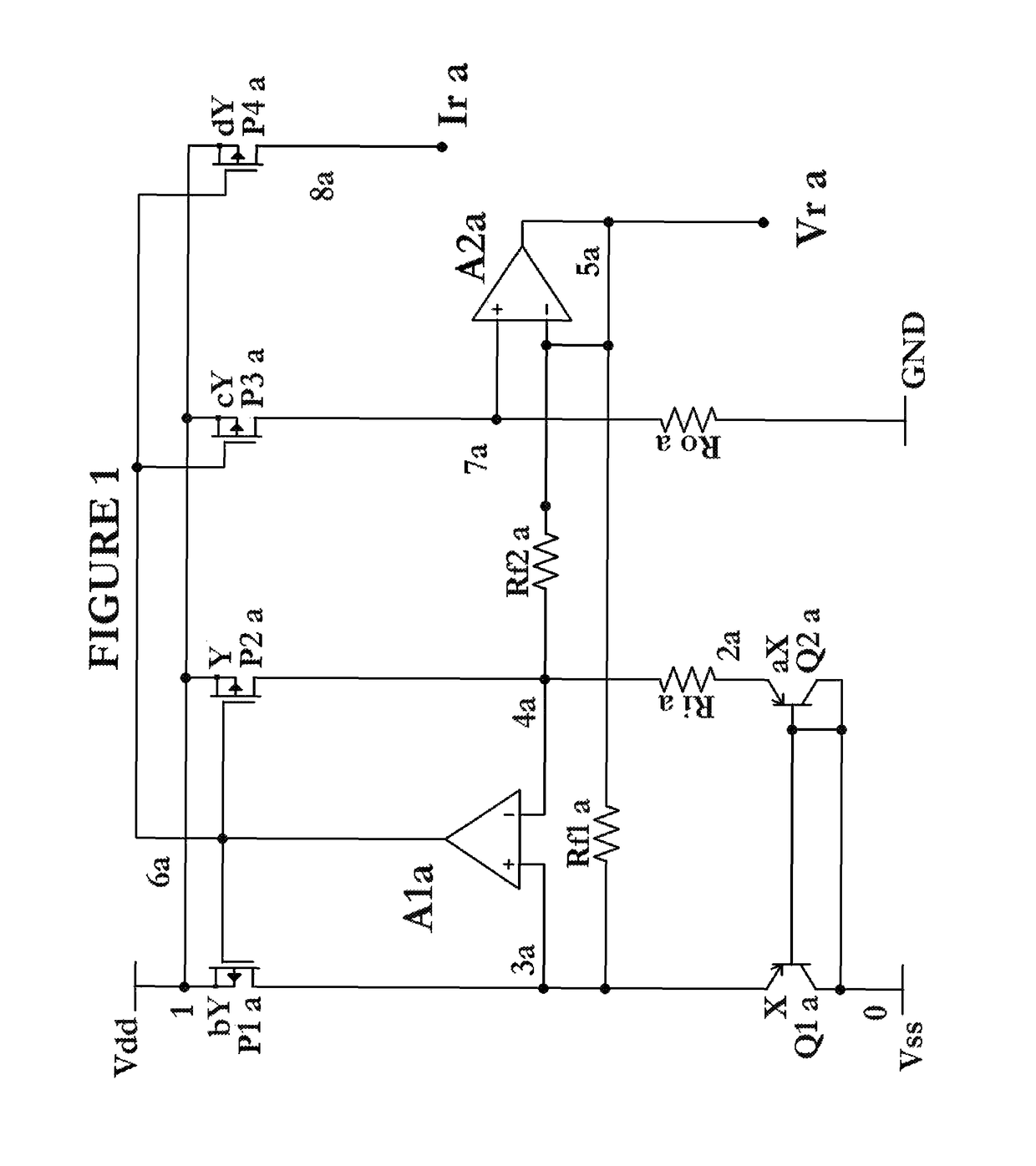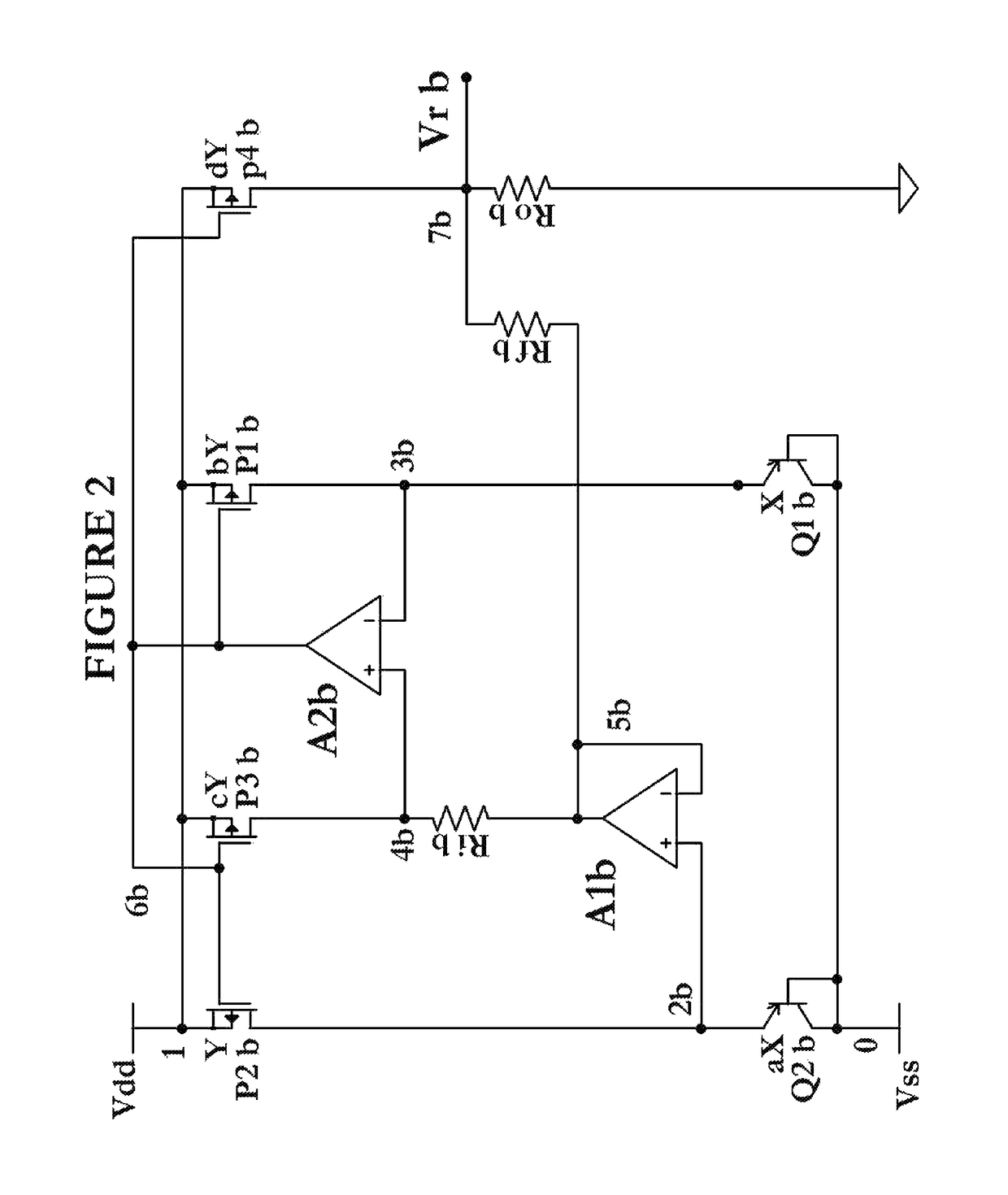Ultra-low power and ultra-low voltage bandgap voltage regulator device and method thereof
a voltage regulator, ultra-low power technology, applied in the direction of power conversion systems, dc-dc conversion, instruments, etc., can solve the problems of imposing higher costs or risks on manufacturing yields, market potential not realized, and huge annual manufacturing investment in semiconductors. some of which is sunk-cost,
- Summary
- Abstract
- Description
- Claims
- Application Information
AI Technical Summary
Benefits of technology
Problems solved by technology
Method used
Image
Examples
first embodiment
[0027]FIG. 1 is a circuit schematic showing a bandgap reference according to the Throughout this description the values of Rf1a=Rf2a=Rfa and current source values which are determined as a function of PMOS W / L scale factors may be set to a predetermined value b=c=d=1. Also note that ‘b’, ‘c’, and ‘d’ scale factors may each be in a predetermined range of 1 to 10 depending on considerations such as die size and current consumption amongst others. The current through Ria is a PTAT current where IRia has a positive TC, comprised of the difference of VEB voltages (between Q1a and Q2a) across Ria. One terminal of each of Rf1a and Rf2a is connected to the reference output Vra, with near zero TC, while each of Rf1a and Rf2a's other terminal is connected to a VEB (of Qia and Q2a) potential with a negative TC. As a result, Rfa's current IRfa will increase with temperature. Now IRia+IRfa+Ira≈0 in order to meet the requirement that sum of currents at a circuit node must be zero. Since ID of P3...
third embodiment
[0055]FIG. 3 is a circuit schematic showing a third embodiment which is an alternative bandgap reference to FIG. 2. Here, the voltage loop consisting of Ric, Q2c, A1c, and Q1c forces a difference VEB, or ΔVEB, voltage to be placed across Ric. The current ΔVEB / Ric is the IPTAT current that is mirrored via P3c onto P1c, P2c and P4c. Concurrently, VEB of Q2c feeds Rfc, which constitutes the CTAT signal. Similarly, note that Q2c is ‘a’ times the size of Q1c and P1c is ‘b’ times the size of P2c. In FIG. 3, the PTAT signal through P4c and CTAT signal through Rfc are then summed and scaled at the Vrc node, by the ratio of Rfc and ROc to generate the desired fractional VBG. With Ric connected to base of Q2c to ground, the PTAT current through Ric (e.g. in the μA level) is segregated from the quiescent current in the Q1c and Q2c BJTs (e.g. in the nA level). Running currents in Ric, Rfc, ROc at normal currents allows for small size resistors which save die costs, while concurrently running Q1...
PUM
 Login to View More
Login to View More Abstract
Description
Claims
Application Information
 Login to View More
Login to View More - R&D
- Intellectual Property
- Life Sciences
- Materials
- Tech Scout
- Unparalleled Data Quality
- Higher Quality Content
- 60% Fewer Hallucinations
Browse by: Latest US Patents, China's latest patents, Technical Efficacy Thesaurus, Application Domain, Technology Topic, Popular Technical Reports.
© 2025 PatSnap. All rights reserved.Legal|Privacy policy|Modern Slavery Act Transparency Statement|Sitemap|About US| Contact US: help@patsnap.com



